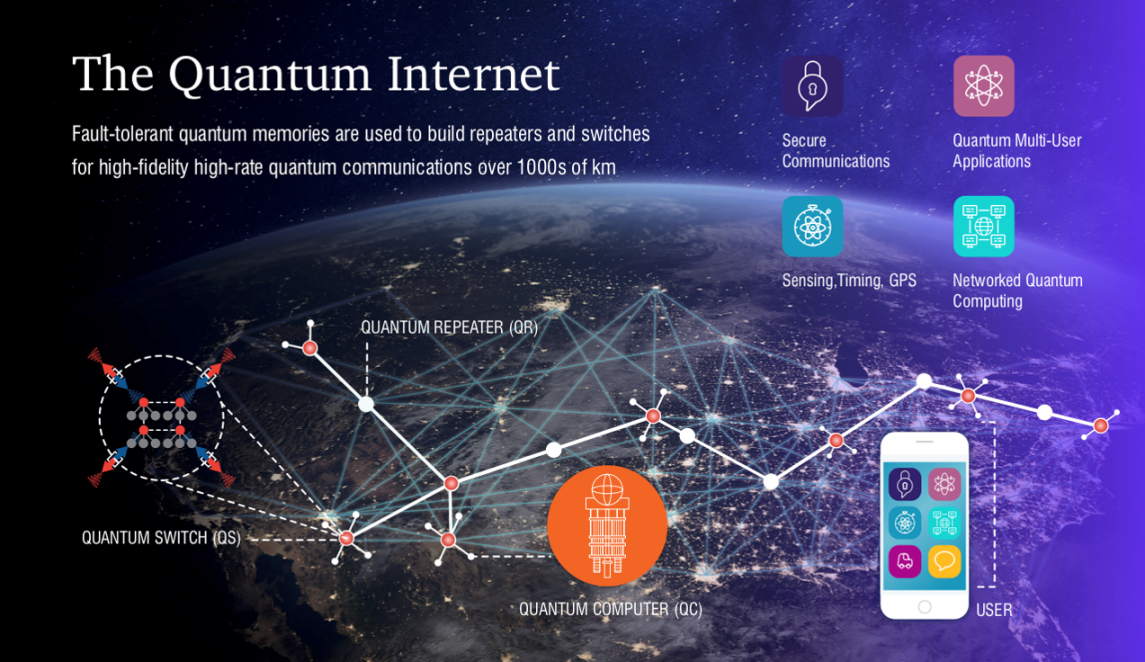Quantum Networking: Revolutionizing the Future of Communication
Introduction
Quantum networking, an emerging field at the intersection of quantum physics and computer science, holds immense promise for revolutionizing the way we communicate and share information. By harnessing the principles of quantum mechanics, this cutting-edge technology offers unprecedented opportunities for enhanced security, faster data transmission, and the development of powerful quantum computers. In this article, we will explore what quantum networking is, how it works, current advancements in the field, and its potential solutions for various industries.
What is Quantum Networking?
Quantum networking is a branch of quantum information science that focuses on the transfer and manipulation of quantum information through quantum systems, such as qubits. Unlike classical networking, which relies on bits that can be either 0 or 1, quantum networking leverages the fundamental properties of quantum mechanics, including superposition and entanglement, to create networks with unprecedented capabilities.
How Does Quantum Networking Work?

At the heart of quantum networking lies the concept of qubits, the quantum equivalent of classical bits. Qubits can exist in multiple states simultaneously due to superposition, allowing for exponentially more information storage and processing power. These qubits are typically encoded in various physical systems, such as photons or atoms, and can be manipulated using quantum gates.
Quantum networks rely on the principle of entanglement, which allows two or more qubits to become interconnected in such a way that the state of one qubit instantly affects the state of another, regardless of their physical separation. This property enables secure quantum communication and forms the basis of quantum teleportation, where quantum information can be transferred instantaneously across vast distances.
What is Currently Known about Quantum Networking?

While quantum networking is still in its early stages, significant progress has been made in both theoretical understanding and experimental implementations. Researchers have successfully demonstrated key quantum networking protocols, such as quantum key distribution (QKD), which enables secure communication by leveraging the principles of entanglement and quantum randomness.
Moreover, several quantum networks have been established over short distances, with entangled qubits being transmitted between distant locations. These achievements pave the way for the development of larger-scale quantum networks capable of global communication and information processing.
Solutions and Applications of Quantum Networking

Quantum networking has the potential to revolutionize numerous industries, including cybersecurity, telecommunications, and scientific research. One of the most promising applications is quantum cryptography, where quantum key distribution ensures unbreakable encryption, safeguarding sensitive information from hacking attempts.
In telecommunications, quantum networks can enable faster and more secure data transmission, significantly enhancing the efficiency of communication networks. Quantum internet, a global network of interconnected quantum computers and communication nodes, could lead to exponential advancements in fields such as drug discovery, optimization problems, and complex simulations.
Information Security and Quantum Networking
Information security is a primary concern in the digital age, with traditional cryptographic methods at risk of being rendered obsolete by the advent of powerful quantum computers. Quantum networking offers a solution through quantum-resistant cryptography, which relies on mathematical algorithms resistant to attacks from both classical and quantum computers.
By integrating quantum-resistant cryptographic techniques into existing networks, organizations can future-proof their information security infrastructure and ensure that sensitive data remains protected even in the face of quantum computing advancements.
Conclusion
Quantum networking represents a paradigm shift in the way we transmit and process information. With its potential for unparalleled security, lightning-fast communication, and transformative computational power, this groundbreaking technology is poised to revolutionize various industries and shape the future of communication. As advancements continue to be made in both theoretical understanding and practical implementations, the possibilities for quantum networking are truly limitless.
Frequently Asked Questions (FAQs)
Q1: Is quantum networking the same as quantum computing?
A1: While related, quantum networking and quantum computing are distinct fields. Quantum computing focuses on developing powerful computers that leverage quantum properties to solve complex problems, whereas quantum networking is concerned with transmitting and manipulating quantum information through networks.
Q2: How does quantum networking enhance security?
A2: Quantum networking enhances security through quantum key distribution, which relies on the principles of quantum mechanics to create unbreakable encryption. By leveraging entanglement and quantum randomness, secure communication channels can be established that are impervious to eavesdropping.
Q3: What are the challenges in implementing quantum networking?
A3: Implementing quantum networking faces several challenges, including maintaining the fragile quantum state of qubits, mitigating the effects of noise and decoherence, and scaling up quantum networks to a global level. Overcoming these challenges requires advancements in both hardware and software technologies.
Q4: When can we expect practical applications of quantum networking?
A4: While quantum networking is still in its early stages, researchers and industry leaders are actively working towards practical implementations. Some quantum networking applications, such as quantum cryptography, are already being used in niche areas, while larger-scale quantum networks are expected to become a reality within the next decade.
Q5: How does quantum networking impact the future of communication?
A5: Quantum networking has the potential to revolutionize communication by enabling faster, more secure data transmission, and unlocking the power of quantum computing. From unbreakable encryption to global quantum internet, this technology holds the key to transforming how we connect and share information in the future.